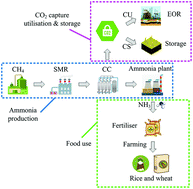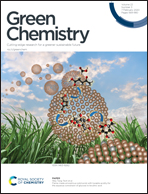The potential of decarbonising rice and wheat by incorporating carbon capture, utilisation and storage into fertiliser production
Abstract
This paper aims to evaluate the reduction in greenhouse gas emissions of rice and wheat and their supply chains by incorporating carbon capture, utilisation and storage into fertiliser production mainly from the ammonia process, which is a part of the fertiliser that produces most of the carbon dioxide. Greenhouse gas emissions of these grains without carbon capture, utilisation and storage are provided from the results of life cycle assessment in the literature. After that, carbon dioxide emission from fertiliser production is quantified. The alternative considered for utilisation is enhanced oil recovery and it is compared with the conventional way of oil production. The effects of carbon capture, utilisation, and storage on greenhouse gas reduction are presented in terms of the supply chains of rice and wheat to make people conscious about the use and optimisation of food. The reduction of greenhouse gas is around 6–7% in the rice supply chain e.g. rice milk, spoons of uncooked rice and 14–16% in the wheat supply chain e.g. pasta, one slice of bread. Although the alternative for carbon dioxide storage demonstrates marginally higher greenhouse gas reduction, enhanced oil recovery may offer an economic incentive from additional oil production that could reduce the cost of rice and wheat.



 Please wait while we load your content...
Please wait while we load your content...